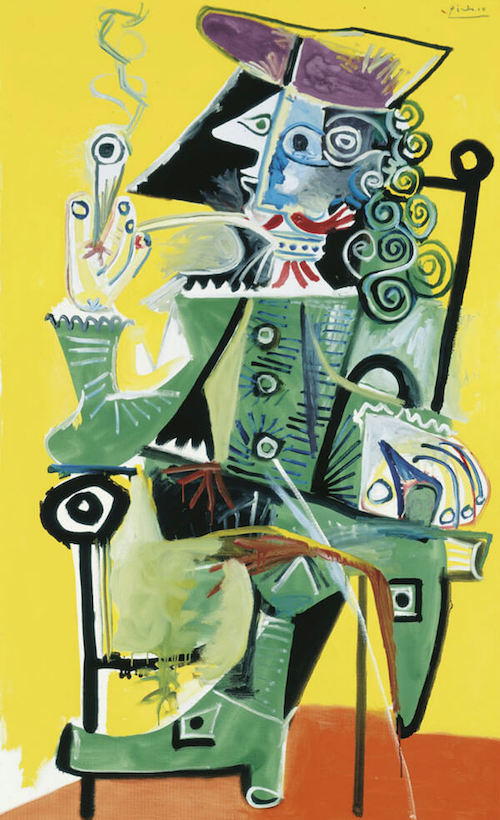Musketeer, 1968 by Pablo Picasso
Towards the end of the 1960s, now approaching his ninetieth year, Picasso introduced a new character into his work - the musketeer. These figures are identifiable by their long-flowing locks, carefully shaped moustaches and ruff collars, encapsulating the charm and elegance of Golden Age romantic heroes. Picasso drew on a multitude of sources for these works, including both Dutch and Spanish Old Masters. In particular he looked to Rembrandt paintings and works of Diego Velazquez, both artists whom Picasso had admired throughout his life and who were renowned for producing some of their best works in their old age.
Here Picasso has represented a seventeenth-century Spanish gentleman in a composition typical of the portraiture of both Rembrandt and Velazquez. The imaginary sitter is seen frontally and proudly displays his finest silks and satins to the world. However, Picasso's unique style is once more displayed through the use of simple, bold and abbreviated brushstrokes to capture the essence of this romantic figure.





















